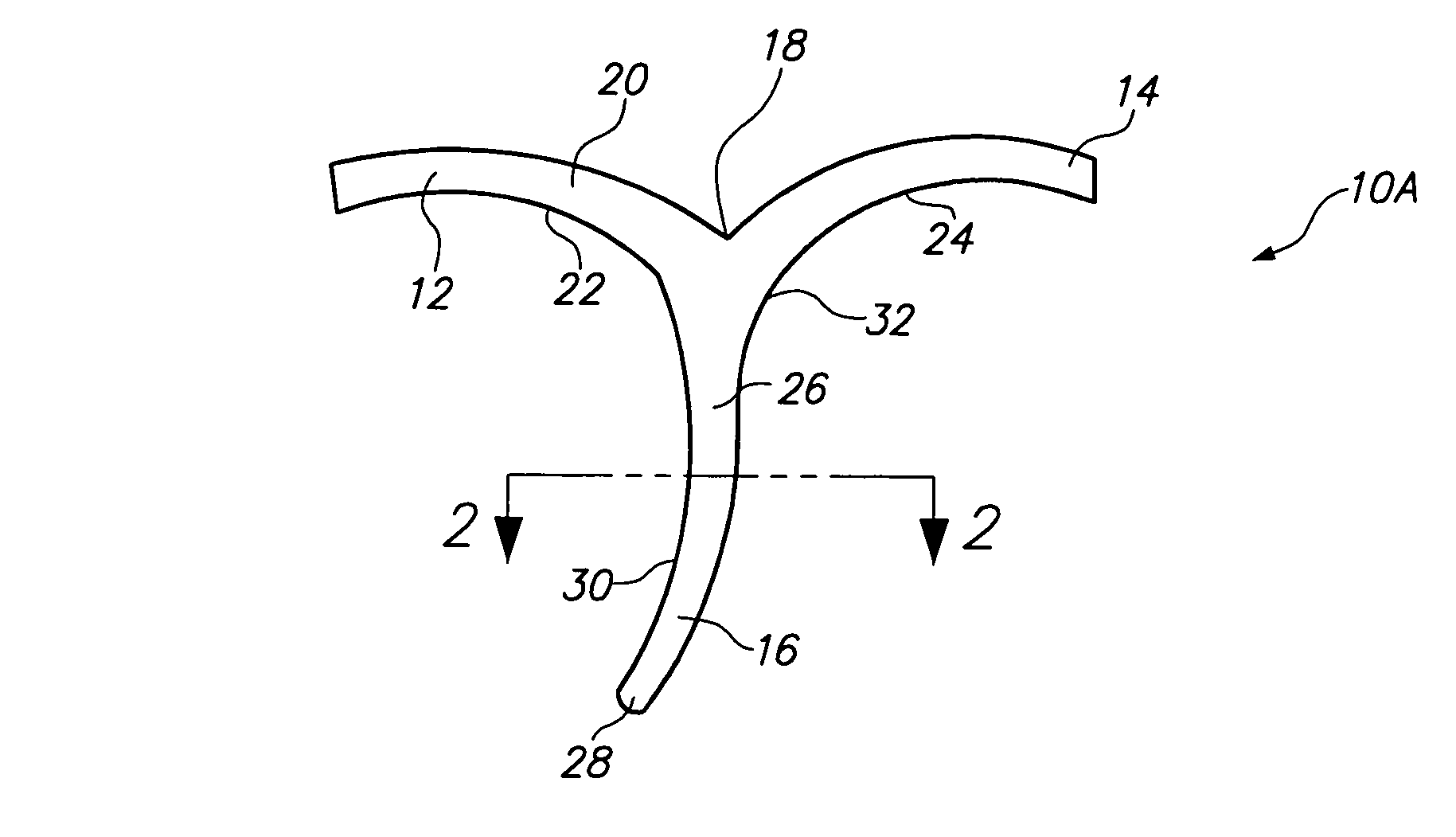Dental wedge and former device
- Summary
- Abstract
- Description
- Claims
- Application Information
AI Technical Summary
Benefits of technology
Problems solved by technology
Method used
Image
Examples
Embodiment Construction
[0036]Various aspects of the present invention will evolve from the following detailed description of the preferred embodiments thereof which should be referenced to the prior described drawings.
[0037]An embodiment of the invention is depicted by reference character 10, followed by an uppercase letter to denote variations thereof. With respect to FIG. 1, an embodiment of a dental wedge and former 10A is shown. Device 10A includes as one of its elements ears, wings, or flanges 12 and 14 which converge or “y” into a downwardly projecting elongated element or nose 16 when viewed from its side, FIG. 4. Wings 12 and 14 converge at a cusp or recess 18, the purpose in which will be discussed hereinafter. Also, wings 12 and 14 include an upper surface 20, above lower surface 34, defining the height of wings 12 and 14. Wings or flanges 12 and 14 possess curved or concave surfaces 22 and 24, respectively. Wedge 10A may be formed of polymeric material.
[0038]Nose or elongated member 16 of devic...
PUM
 Login to View More
Login to View More Abstract
Description
Claims
Application Information
 Login to View More
Login to View More - R&D Engineer
- R&D Manager
- IP Professional
- Industry Leading Data Capabilities
- Powerful AI technology
- Patent DNA Extraction
Browse by: Latest US Patents, China's latest patents, Technical Efficacy Thesaurus, Application Domain, Technology Topic, Popular Technical Reports.
© 2024 PatSnap. All rights reserved.Legal|Privacy policy|Modern Slavery Act Transparency Statement|Sitemap|About US| Contact US: help@patsnap.com










